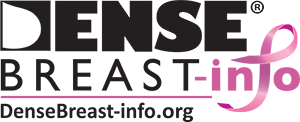Flow Chart: Who Needs More Screening?
Footnotes
MRI = magnetic resonance imaging; DBT = digital breast tomosynthesis; PHBC = personal history of breast cancer; dx = diagnosed; XRT = radiation therapy; US = ultrasound; CEM = contrast-enhanced mammography; FFDM = full-field digital mammography; MBI = molecular breast imaging
AModified from Berg WA, Rafferty EA, Friedewald SM, Hruska CB, Rahbar H. Screening Algorithms in Dense Breasts: AJR Expert Panel Narrative Review. AJR Am J Roentgenol. 2021;216(2):275-294 and National Comprehensive Cancer Network. NCCN Guidelines. Breast cancer screening and diagnosis v.1.2023 – June 19, 2023.
B For cancer detection by modality, see DenseBreast-info.org (Technology Tab/Table: Summary of Cancer Detection by Screening Method).
C Using risk models largely dependent on family history, such as the Tyrer Cuzick (IBIS), BOADICEA (CanRisk), or BRCAPRO models, but NOT the Gail model; see DenseBreast-lnfo.org (Health Professional Tab/Risk Models).
D Women with LCIS (lobular carcinoma in situ) or ADH (atypical ductal hyperplasia) should consider supplemental surveillance with MRI, especially if other risk factors are present.
E Age to start screening MRI varies by genetic variant. See Risk Models Table (Health Professional Tab/Risk Models).
F Others with PHBC should strongly consider supplemental screening with MRI, especially if other risk factors are present.
G Those who qualify for but cannot have MRI, consider CEM or MBI if over age 30. If not possible, consider screening US. For women age 25-29 who meet criteria for screening MRI but are unable to have it, including pregnant women (any age), consider screening US.
NOTE: This flow chart represents the consensus opinion of our medical reviewers based on the best available evidence. The proposed strategy is relatively aggressive, designed to optimize cancer detection. Every technology may not be available at every site. Other guidelines may recommend a later start or different screening frequency. This is not intended to be a substitute for medical advice from a physician or to create a standard of care for health care providers.

